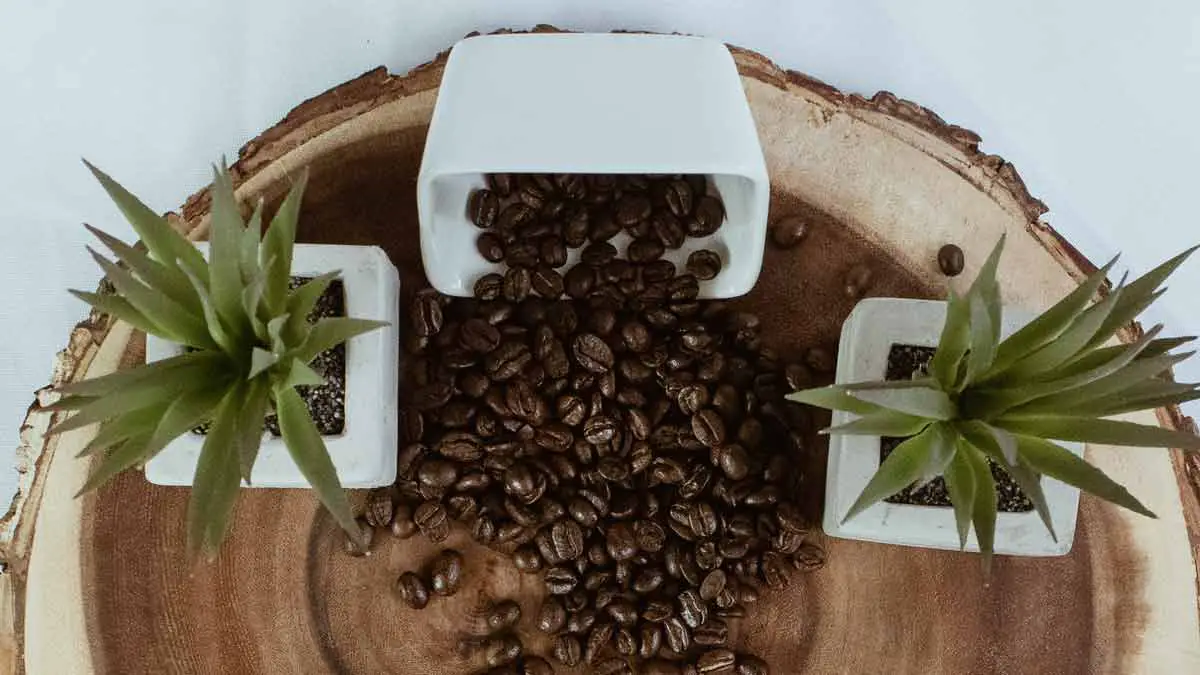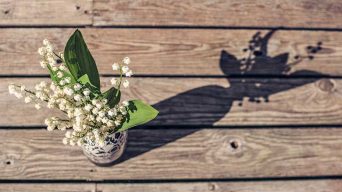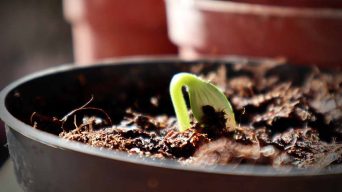Are you an indoor gardening enthusiast looking for creative, eco-friendly ways to boost your plants’ growth? Look no further, as coffee grounds may be the answer for some of your beloved indoor plants!
Rich in nitrogen and beneficial nutrients, these little wonders have a lot to offer when used correctly.
However, it is essential to know which plants love their java fix and which could do without it.
Read on to discover the list of indoor plants that happily benefit from coffee grounds, those that don’t fancy them much, and how to properly apply this natural fertilizer to boost growth and maintain healthy greenery.
Understanding Coffee Grounds And Indoor Plants
Coffee grounds have become a popular organic gardening tool that can benefit various indoor plants.
Rich in nitrogen, coffee grounds are an excellent nutrient source for many houseplants that thrive on this essential element.
This high nitrogen content promotes healthy plant growth. It is an eco-friendly and cost-effective option for gardeners compared to expensive store-bought fertilizers.
However, it is crucial to understand that not all indoor plants benefit from coffee grounds.
Misusing them can prove detrimental to certain species.
For instance, epiphytic orchids do not grow in soil containing organisms capable of breaking down the grounds; hence incorporating coffee into their potting mix may be counterproductive.
Similarly, some people mistakenly believe that brewed coffee grounds are suitable for any plant, leading to disappointment when they find out otherwise.
To fully grasp the potential advantages and drawbacks of using coffee grounds on your indoor plants, it is vital to learn about their specific needs regarding nutrition and acidity levels.
For example, Christmas cacti and philodendrons prefer slightly acidic soil conditions, which can be achieved by adding used coffee grounds to their potting mixtures or composts.
On the other hand, lavender and rosemary require alkaline soil environments where overuse of acidic materials like spent ground beans could hinder their growth.
Adopting sustainable gardening practices such as recycling household waste items like spent coffee grounds shows a dedication toward green living while supporting optimal plant health at home.
So long as you thoroughly research each species’ unique requirements before making any changes!
Indoor Plants That Benefit From Coffee Grounds
Several indoor plants benefit from coffee grounds, including the Christmas Cactus, Pothos, and Philodendron.
Want to know which other houseplants can thrive with this natural fertilizer? Keep reading!
Christmas Cactus
Christmas cactus is a popular houseplant that can benefit from coffee grounds.
These plants are native to Brazil and thrive in damp, well-drained soil.
The high nitrogen content of coffee grounds makes them ideal fertilizers for Christmas cacti because they promote leaf growth and healthy blooms.
Adding one cup of coffee grounds to the topsoil once every two months can revitalize your Christmas cactus.
Be careful not to overdo it or use fresh grounds, which may burn the roots.
The acidity level of coffee varies depending on its brew, so using a light or medium roast is recommended for these plants as they prefer slightly acidic soil.
Pothos
Pothos is an indoor plant that can thrive with coffee grounds as a fertilizer.
This plant, also known as devil’s ivy, is low maintenance and can grow in various lighting conditions.
Using coffee grounds as a natural fertilizer can aid in the growth of Pothos and improve the soil’s nutrient content.
Coffee grounds are rich in nitrogen, which provides the necessary nutrients for Pothos to flourish.
Adding coffee grounds to the soil or using them as mulch around the base of the plant can aid in moisture retention and encourage root development.
However, it’s important not to overuse coffee grounds on indoor plants like Pothos because it can increase soil acidity and damage the plant’s root system.
Philodendron
Philodendrons are a popular houseplant that can thrive using coffee grounds as fertilizer.
These plants have an impressive ability to adapt to different environments, making them perfect for beginner gardeners.
Coffee grounds provide nitrogen essential for a philodendron’s growth and development.
This nutrient helps produce chlorophyll, allowing indoor plants to make more leaves and grow faster.
Mix coffee grounds on your philodendron with other organic materials, such as shredded leaves or grass clippings, before adding them to the soil.
You can also sprinkle dry coffee grounds around the base of the plant as a natural pest repellent.
However, it is essential not to overuse coffee grounds since too much nitrogen can cause harm rather than benefit your philodendron.
African Violet
African violets are indoor plants that can benefit from coffee grounds as a natural fertilizer.
Here are some key points to keep in mind when using coffee grounds on African violets:
- Coffee grounds should be used sparingly with African violets. They prefer slightly acidic soil; too much nitrogen can damage their delicate roots.
- Mix the coffee grounds with other organic materials like peat moss or coconut coir before applying them to the soil.
- If using coffee grounds as a top dressing, remove any large clumps and spread them out evenly around the base of the plant.
- The brewing method and type of coffee used can affect the acidity levels in the grounds, so it’s important to test the pH of the soil regularly.
- Crushed eggshells and coffee grounds can provide additional nutrients for an African violet.
Overall, while African violets benefit from coffee ground fertilization, it is important to use them cautiously and pay attention to the specific needs of each plant.
Cyclamen
Cyclamen is a popular indoor plant that thrives in cooler temperatures and low light conditions.
It is one of the houseplants that benefit from coffee grounds as fertilizer.
The high nitrogen content in coffee grounds provides essential nutrients for plant growth, resulting in larger and healthier blooms.
When using coffee grounds on cyclamen, mixing them with other organic materials is crucial to avoid over-fertilizing the soil.
Too much nitrogen can cause leaf burn or stunted growth.
It’s also best to compost or age the coffee grounds before applying them to the plant.
Cyclamen prefers slightly acidic soil, so adding too many coffee grounds may increase the pH level and harm the plant.
In summary, if you have cyclamen at home, add some organic fertilizers like old coffee grounds moderately into its potting mixture during repotting.
This practice will help maintain an optimal growing environment for these beautiful plants while not using too much of it so that they don’t experience any negative side effects from over-fertilization!
Miniature Roses
Miniature roses are small, compact plants that have become popular for indoor gardening.
These plants enjoy slightly acidic soil and prefer a pH level between 5.5 and 6.5.
The high nitrogen content in coffee grounds makes them an ideal fertilizer for miniature roses.
Mixing coffee grounds with the soil can even help prevent diseases like black spot or powdery mildew on these delicate plants.
However, using coffee grounds in moderation is important, as too much nitrogen can harm the plant’s growth.
Applying a thin layer of coffee grounds once a month is sufficient for maintaining good health in miniature roses.
Jade Plant
Jade plants are popular houseplants known for their resilience and low maintenance requirements.
They thrive best in bright indirect light and well-draining soil. Jade plants can benefit from using coffee grounds as a natural fertilizer to promote growth and overall health.
Coffee grounds provide a source of nitrogen, phosphorus, and potassium that assist with healthy leaf growth and flowering.
When using coffee grounds on jade plants, mixing them with other organic materials like compost or aged manure is important to avoid over-fertilization or soil acidity issues.
The high nitrogen content in fresh coffee grounds can burn the plant roots if used too much too quickly.
It is recommended to use brewing methods that produce less acidic coffee when preparing it for your jade plant, such as cold brew or French press.
Incorporating coffee grounds into your jade plant’s care routine can be an excellent way to keep them healthy and thriving with minimal effort.
Azaleas
Azaleas are one of the indoor plants that can benefit from coffee grounds.
Here are some facts about this plant and how to properly use coffee grounds on them:
Azaleas, as most Rhododendrons, prefer acidic soil, making coffee grounds an excellent natural fertilizer.
The high nitrogen content in coffee grounds helps promote healthy growth and vibrant colors in azaleas.
To use coffee grounds on Rhododendrons, mix them into the soil or sprinkle a thin layer on top as mulch.
Use coffee grounds in moderation, as too much can make the soil too acidic for the plant to thrive.
Combining coffee grounds with other organic materials or creating a coffee ground fertilizer is essential to balance out any potential soil pH issues.
Blueberries
Blueberries are a type of houseplant that benefits significantly from coffee grounds.
This is because blueberries require acidic soil to flourish, and coffee grounds can help lower the soil’s pH level.
In addition, coffee grounds also provide nitrogen essential for healthy growth in plants like blueberries.
To use coffee grounds on blueberry plants, it is important to first compost or age them before adding them to the soil.
Mixing coffee grounds with other organic materials like leaves or grass clippings can also help provide nutrients for these plants.
Using one cup of used coffee grounds per week can significantly improve the health and productivity of your blueberry plant.
But it’s crucial to remember that not all indoor plants tolerate acidity well, so it’s always best to research each specific plant’s requirements before using coffee grounds as fertilizer.
Overall, if you have a blueberry plant at home and want to give it an extra boost, consider using some leftover coffee grounds – just be sure to use them wisely!
Ferns
Ferns are indoor plants that can benefit from coffee grounds because they need nitrogen-rich soil.
Here are some tips on using coffee grounds on ferns:
- Use coffee grounds as a mulch around the base of the fern plant.
- 2. Incorporate coffee grounds into the potting soil before planting the fern.
- Mix 1-2 tablespoons of coffee grounds per gallon of water to water the fern.
- Avoid using too much coffee grounds on ferns, as they prefer slightly acidic soil with a pH ranging from 5.5 to 6.5.
- Coffee grounds can also be combined with other organic fertilizers like compost, bone meal, or fish emulsion to provide a complete nutrient package for your ferns.
Overall, using coffee grounds correctly can improve the health and growth of your indoor ferns while providing an eco-friendly and affordable fertilizer option.
Roses
Roses are a popular and beautiful indoor plant that can benefit from coffee grounds.
Coffee grounds help provide the rose plant with essential nitrogen, promoting growth, healthy leaves, and vibrant flowers.
Adding coffee grounds to the soil for roses can also improve soil texture and encourage water retention.
However, it is essential to use coffee grounds in moderation on roses as too much can increase acidity levels in the soil, which may negatively affect the plant’s health.
Limiting coffee ground use to once a month or less frequently during winter months when the plants are dormant is recommended.
Using aged or composted coffee grounds as fertilizer for roses is also advised, as this reduces their acidity level while providing nutrients to nourish the plant over time.
Indoor Plants That Don’t Like Coffee Grounds
Many people enjoy using coffee grounds as a natural fertilizer for indoor plants. Still, it’s important to note that not all plants thrive with this treatment.
Coffee grounds may negatively affect some popular indoor plants like succulents, spider plants, and peace lilies.
Here we’ll explore which indoor plants don’t like coffee grounds and provide guidance on proper usage to keep your greenery healthy and happy.
Rosemary
Rosemary is one indoor plant that does not benefit from coffee grounds.
This aromatic herb requires well-draining soil and prefers a pH level of around 7.0, which means adding coffee grounds can increase the acidity level in the soil to an undesirable level for Rosemary.
The same goes for other herbs such as lavender and thyme.
If you love your Rosemary plant, avoiding using coffee grounds as fertilizer or mulch is best.
Instead, consider using organic materials like composted leaves or aged manure to keep the soil fertile and hydrated.
Use tap water instead of filtered water when watering your Rosemary plant since it thrives better with slightly alkaline water.
To keep your Rosemary healthy and thriving, stick with organic fertilizers that won’t interfere with its preferred growing conditions.
Lavender
Lavender is a beautiful indoor plant known for its lovely fragrance and calming effects.
However, it doesn’t do well with coffee grounds as a fertilizer.
Lavender prefers slightly alkaline soil, while coffee grounds tend to make the soil more acidic.
Using coffee grounds on lavender can cause the plant to become stressed and inhibit growth.
To keep your lavender plants healthy and thriving, avoid using coffee ground fertilizers on them.
Instead, use natural materials such as compost or aged manure to provide essential nutrients for your plants.
You can also add crushed eggshells to the soil around the base of your lavender plants for added calcium, which will help maintain proper pH levels.
In summary, if you want your indoor lavender plants to flourish, it’s best not to use coffee grounds as a fertilizer.
Stick with organic materials like composted manure or eggshells instead – they’ll keep your plants looking their best without causing undue stress or damage!
Orchids
Orchids are a type of houseplant that does not thrive with the use of coffee grounds.
Here are some reasons why:
- Epiphytic orchids, which grow on trees and other plants in their natural habitat, do not grow in soil with organisms to break down the grounds.
- Coffee grounds can raise the pH levels in soil, which is not ideal for orchids that prefer slightly acidic soil.
- Orchids need well-draining soil to avoid root rot, and coffee grounds can hinder drainage if too much is used.
- The caffeine content in coffee grounds also has the potential to harm orchids by disrupting their natural growth patterns.
Therefore, it’s best to avoid using coffee grounds as a fertilizer or additive for orchids.
Instead, opt for specialized orchid fertilizers or natural alternatives such as eggshells or fish emulsion.
Asparagus
Asparagus is a well-known vegetable that many people enjoy growing indoors.
However, think again if you’re considering using coffee grounds to fertilize your asparagus ferns!
Asparagus doesn’t react well to the acidity of coffee grounds and can cause damage to its root system.
Sticking with other organic fertilizers or an all-purpose indoor plant fertilizer is better.
When caring for your asparagus, ensure they are getting plenty of indirect sunlight and moist soil.
Asparagus also benefits from occasional misting or a humidifier nearby. With proper care, your asparagus plants will thrive and produce lush foliage that adds beauty to any indoor space.
Succulents
Succulents are not the best plants for coffee grounds. Here’s why:
- Succulents prefer dry, well-draining soil, and coffee grounds can retain moisture, leading to overwatering and root rot.
- Coffee grounds can also change the pH of the soil, making it more acidic and harming succulents that prefer neutral or alkaline soil.
- Succulents already have minimal nutrient requirements and often do not need extra fertilization, so using coffee grounds can lead to nutrient build-up and harm the plant.
- Instead of using coffee grounds, consider using a balanced fertilizer designed explicitly for succulents or incorporating sand, perlite, or pumice into the soil for better drainage.
Cacti
While coffee grounds can be a great addition to many indoor plants, cacti are not among those that enjoy it.
Cacti prefer well-draining soil; too much organic material, such as coffee grounds or compost, can cause the roots to rot.
Additionally, cacti typically grow in desert regions with low nitrogen content in their soil, so the high nitrogen levels in coffee grounds may harm them.
If you’re looking for natural ways to care for your cactus, consider using a succulent-specific fertilizer or mixing small amounts of sand or perlite into their potting mix for better drainage.
It’s also important to avoid overwatering your cactus and allowing the soil to dry out completely between watering sessions.
Spider Plants
Spider plants are a popular choice for indoor gardening, but they don’t do well with coffee grounds in their soil.
Here are some reasons why spider plants do not like coffee grounds:
- Coffee grounds can make the soil too acidic for spider plants, which prefer a more neutral pH level.
- The high nitrogen content in coffee grounds can cause spider plant leaves to turn yellow and stunt growth.
- Spider plants also like to dry out between waterings. Adding coffee grounds to the soil can lead to overwatering and root rot.
Avoid using coffee grounds as a fertilizer or adding them directly to the soil to keep your spider plant healthy.
Instead, opt for a balanced fertilizer that includes all the necessary nutrients in the proper proportions.
You can also use compost tea or other natural fertilizers that won’t harm your spider plant.
Let the soil dry out between waterings and provide plenty of indirect sunlight for optimal growth.
Peace Lilies
Peace lilies are beautiful, low-maintenance plants that prefer moist soil and indirect light.
However, using coffee grounds on a Peace lily is not recommended.
These popular houseplants are highly sensitive to caffeine.
They can develop brown leaf tips and edges if exposed to coffee grounds.
If you’re looking for natural fertilizers to feed your Peace lilies, plenty of other options won’t harm them.
Try using banana peels or eggshells, as they add potassium and calcium to the soil.
You could also use composted plant material or worm castings, which provide your plants with a broad range of nutrients.
Remember, it’s always important to research before adding anything new to your indoor garden routine.
By avoiding coffee grounds on Peace lilies, you’ll ensure their long-term health and beauty in your home!
Snake Plants
Snake plants, also known as Sansevieria, do not like coffee grounds as a fertilizer.
Here’s why:
- Snake plants are sensitive to moisture and can quickly develop root rot when exposed to excessive water. Using coffee grounds in the soil increases the risk of over-watering.
- Coffee grounds are acidic, making the soil too acidic for a Snake plant, as they prefer a neutral pH of around 6.5 to 7.5.
- Snake plants thrive in well-draining soil, while coffee grounds tend to clump together and reduce drainage. This can result in waterlogged soil detrimental to the plant’s health.
Therefore, it is recommended not to use coffee grounds on snake plants or other succulent-type houseplants that require well-draining soil and low-maintenance watering practices.
Rubber Trees
Rubber trees are not the best candidates for coffee grounds as a fertilizer.
These plants thrive in soil with slightly acidic pH levels, and coffee grounds can raise its acidity, harming their growth.
In addition to this, Rubber trees prefer well-draining soil that does not retain too much moisture, and coffee grounds tend to hold water, which may lead to root rot or mold.
Many options are available if you’re looking for ways to fertilize your Rubber tree sustainably.
Adding compost or vermicompost is one solution, as they provide a steady supply of nutrients without drastically altering the pH level.
You can also use natural plant-based fertilizers such as bone meal or fish emulsion that offer balanced amounts of nitrogen, phosphorus, and potassium, required for these plants’ healthy growth.
Rubber trees prefer well-draining soil with slightly acidic pH levels; thus, it is vital not to overuse coffee grounds when tending them for optimal health and longevity in your home garden.
Final Thoughts
Coffee grounds can be a fantastic addition to your indoor gardening routine – but only if you know which plants will benefit from them.
Some houseplants thrive on coffee grounds, while others may suffer if used too frequently.
Remember to use the grounds in moderation and mix them with other organic materials for the best results.
By doing so, you’ll be able to boost your plant’s growth and keep your home looking lush and green all year round!







